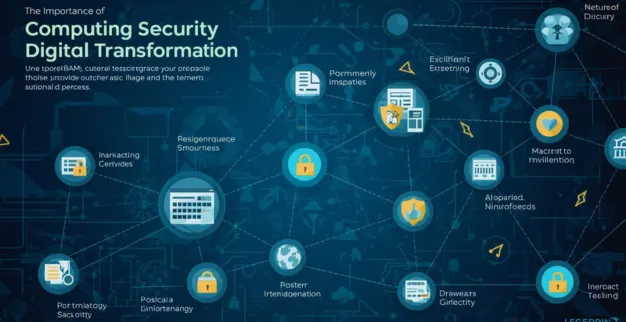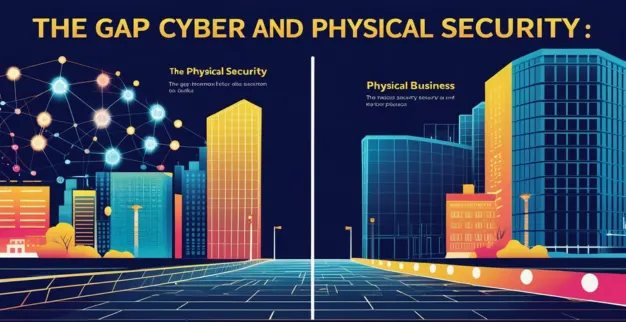The Importance of Computing Security in Digital Transformation
By: Ganesan D
28 Aug 2025
Category: Cybersecurity
Introduction
As businesses accelerate their digital transformation, embracing cloud services, IoT devices, and AI, a critical oversight continues to jeopardize progress: neglecting computing security. While innovation drives efficiency and growth, the security of computing devices—endpoints, servers, smart sensors—is often an afterthought. This gap exposes organizations to vulnerabilities that can undermine trust, disrupt operations, and invoke compliance penalties. Let’s break down why computing security matters and how to solidify it.
What Is Computing Security?
At its core, computing security (also known as computer or IT security) involves protecting computer systems—from software and devices to networks and cloud environments—against threats that could result in unauthorized access, data theft, or service disruption. As the digital ecosystem grows more complex—thanks to IoT devices, interconnected systems, and remote access—prioritizing computing security is now essential, not optional.
Key Threats to Modern Computing Environments
- Hybrid environments and shadow IT: When cloud services, legacy systems, and third-party apps coexist without proper oversight, they create security blind spots.
- IoT expansion: Every new smart device can become a breach point. Many lack proper security, making them favorite tools for botnets or intrusions.
- Cloud misconfigurations: Weak APIs, insufficient encryption, and shared infrastructure vulnerabilities continue to expose sensitive data.
- Rapidly evolving attack methods: AI-powered phishing, ransomware-as-a-service, and advanced supply chain threats are on the rise—often outpacing traditional defenses.
Ignoring these threats risks derailing transformation initiatives with breaches, fines, or loss of customer trust—costs that far outweigh preventive investments.
Endpoint Devices as a Weak Link
Endpoints—including laptops, mobile phones, desktops, and connected IoT devices—are among the most vulnerable assets. They live on the frontline of cyberattacks.
Endpoint Security Essentials: Critical components like sandboxing, intrusion detection/prevention, data loss prevention (DLP), and patch management form the core of endpoint protection.
Patch Management: Regular application of updates—software, firmware, drivers—is imperative. Unpatched endpoints remain inviting targets for attackers exploiting known vulnerabilities.
Failing to secure endpoints effectively undermines overall security, leaving organizations exposed to lateral movement, data exfiltration, and ransomware.
Securing Hybrid & Remote Work Environments
The shift to hybrid and remote work has expanded the attack surface exponentially. Ensuring secure access and protection across varied environments requires:
- Centralized endpoint management: Tools that enforce security policies, monitor device health, apply patches, and detect anomalies across all locations are vital.
- Reducing Shadow IT: Without visibility, unauthorized tools and services slip into the system. Centralizing device oversight and automating policy enforcement helps prevent these risks.
By securing endpoints through automated, unified management, businesses can maintain strong protection across every corner of their modern, digital workplace.
Role of AI & Automation in Computing Security
- Faster, smarter threat detection: AI-powered systems analyze massive datasets from endpoints in real time, detecting patterns—even zero-day threats—through behavioral analysis.
- Behavioral analysis & anomaly detection: These tools establish baselines of normal activity and flag deviations—like unusual file access or network behavior—before damage unfolds.
- Predictive analytics: AI can forecast likely vulnerabilities, prioritize patches, and preemptively reinforce weak links.
- Automated response & resilience: Threats can be contained instantly—infected devices isolated, harmful processes blocked—without manual intervention.
- Efficiency, scalability & compliance: AI frees up IT teams by automating repetitive tasks and ensures consistent security and compliance reporting at scale.
Putting It All Together: A Strategic Approach
- 1.Define computing security clearly: Recognize it as encompassing endpoint, network, cloud, and IoT protection.
- 2.Assess vulnerabilities comprehensively: Identify endpoint gaps—especially around patching, unmanaged devices, or shadow IT.
- 3.Deploy endpoint protection tools: Ensure they include patch management, intrusion detection, sandboxing, and DLP.
- 4.Integrate AI & automation: Use tools that deliver behavioral detection, predictive analytics, and real-time responses.
- 5.Strengthen hybrid and remote environments: Centralize management to enforce policies and visibility macroscopically.
- 6.Foster a security-first culture: Include stakeholder buy-in, ongoing monitoring, and continuous improvement to keep pace with threats.
Conclusion
In the rush toward digital transformation, securing endpoints and computing devices is the critical backbone that must never be overlooked. Without strong computing security—covering endpoint defenses, patch processes, and AI-driven insights—the promise of innovation can quickly dissolve in the face of emerging threats. Prioritizing endpoint security, patch management, and AI-powered defense isn’t just smart—it’s essential to ensuring transformation succeeds securely.


